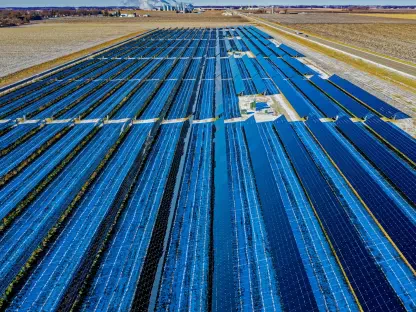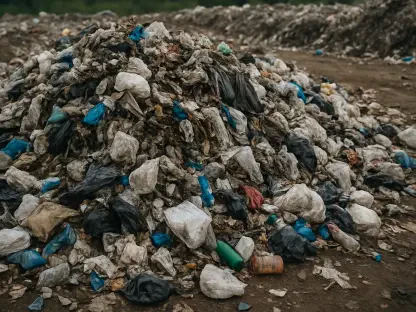The pivotal role of catalytic converters in chemical reactions, especially in industrial applications, has led to a significant focus on improving their efficiency and longevity. Catalysts expedite chemical reactions at lower temperatures, making them indispensable in numerous sectors. However, many catalysts rely on critical minerals that present both economic and geopolitical challenges due to supply chain issues. The Department of Energy’s Pacific Northwest National Laboratory (PNNL), in collaboration with industry leaders and academia, has embarked on a groundbreaking initiative to enhance catalyst efficiency and durability while reducing dependency on these scarce resources. This effort aims not only to bolster industrial performance but also to address supply chain vulnerabilities inherent in the reliance on critical minerals.
The Role of Critical Minerals and Catalyst Dependence
Catalysts typically include critical minerals—such as cerium and rhodium—recognized globally for their economic and strategic importance. The over-reliance on these minerals poses a risk, given their concentrated production in specific regions like China, the leading producer of several essential minerals. The scarcity and price volatility associated with these materials render industrial processes vulnerable, highlighting the need for innovative research. The dependency on critical minerals has prompted scientists to explore ways to improve catalyst performance while minimizing usage. Ongoing research at PNNL prioritizes the development of alternative methods and materials to address these complex challenges. Through a science-to-solutions approach, researchers focus on understanding the degradation mechanisms of critical minerals in catalysts and devising ways to optimize their functions without excessive reliance on these minerals.
Innovations in Enhancing Catalyst Longevity
PNNL’s research has been instrumental in reshaping how catalysts are understood and utilized within the industry, emphasizing a balance between efficiency and resource conservation. One notable achievement is the enhancement of catalytic converters used in heavy-duty vehicles by extending their lifespan and improving the efficiency of their makeup materials. Collaboration with entities such as Washington State University has been pivotal in driving these advancements, which directly benefit industries dependent on these technologies, like agriculture and construction. Cost concerns for businesses and consumers are integral considerations. Researchers aim to minimize production costs and increase catalyst effectiveness, reflecting a dual approach to innovation and practicality. The research underscores the potential to reduce the costs associated with critical materials and improve their efficiency, offering financial and environmental gains.
Advances in Cerium Utilization and “Oxygen Sponges”
A significant aspect of PNNL’s findings is the innovative use of cerium, a key catalyst component that enhances chemical reactions by storing oxygen. Researchers explored the performance of cerium by substituting conventional steam aging methods with experiments using exhaust gases. This approach simulates real conditions, leading to the development of nanosized cerium oxide clusters. These structures provide additional active sites on the catalysts, heightening their exposure to exhaust gases, thus improving performance. Another noteworthy discovery involves creating an “oxygen sponge” through the pretreatment of catalysts with exhaust gases. This form of pretreatment enriches the catalytic reactions, optimizing the addition or removal of oxygen. By considering early lifecycle activation, researchers aim to boost catalyst efficiency and resilience, thus offering significant improvements in long-term performance.
Reducing Rhodium Dependency and Broadening Applications
The reduction of dependence on rhodium—a mineral with volatile pricing that often exceeds gold’s value—has been another focal point of PNNL’s research. The revelation that single atoms of rhodium outperform when dispersed rather than forming clusters reshapes traditional approaches. This understanding allows for innovative catalyst designs where single rhodium atoms, alongside cerium oxide, maximize overall catalyst efficiency. Beyond exhaust applications, PNNL’s advancements promise broader industrial impacts. The development of catalysts capable of lower temperature operations without sacrificing durability offers potential in various other applications. The insights gained from PNNL’s research are extending to large engine and equipment manufacturers such as Cummins and John Deere, as well as catalyst suppliers like BASF and Johnson Matthey, ensuring these breakthroughs translate to real-world production and utilization.
Future Prospects and Industry Implications
Looking towards the future, PNNL’s pioneering research in catalyst development is well-positioned to drive substantial shifts within the industry. Their commitment to exploring new designs and alternative fuel use aligns with current trends towards sustainability and cost-efficiency. By fostering collaborations with key industry players, these findings move closer to commercialization, promising tangible benefits across multiple sectors. The implications of such advancements extend beyond mere efficiency gains. They represent a strategic move towards stabilizing supply chains while reducing environmental impacts associated with the extraction and use of critical minerals. PNNL’s work thus signifies a crucial step forward in addressing the dual challenges of innovation and resource management. By continuously improving catalyst performance and longevity, PNNL is influencing the future trajectory of industrial processes, ensuring resilience and sustainability in the face of evolving global demands.









